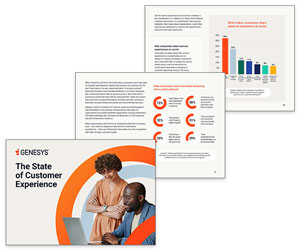Our panel of experts suggest key examples of resource planning tools and techniques, helping you to run an efficient contact centre operation, which complements employee engagement.
1. Forecast Your “What-if” Scenarios
Running “what-if” scenarios within your contact centre is a technique and tool to help you plan and schedule for the future.
For example, running regular hypothetical “what-if” scenarios can help your organization understand how your business will cope with increased demand.
Running regular hypothetical “what-if” scenarios can help your organization understand how your business will cope with increased demand.
If your organization takes on new business or a contract, will you be able to cope? Do you have the capacity? Running “what-if” scenarios can help you plan for the impact of business changes.
It can help you identify precisely how many more staff you would need – where you need them and when.
Running scenarios such as these will prepare your contact centre to meet your desired service levels and allow you to be more efficient in your resourcing and recruitment.
2. Forecast Your Special Days
When forecasting, don’t forget to take into account “special days”. Special days are when customer contact volumes are different from normal.
A “special day” may be a national holiday or a specific event.
Here is a four-step technique you should consider when analysing these days:
- Collect historic data for previous similar “special days”. When analysing, check when they occurred (day of the week, the month).
- Use WFM to predict daily and interval call volumes. This means you’ll need to break down the forecast into time intervals (monthly, daily and hourly) and apply the “special day” effect.
- Don’t just consider the volume (amount) but also the delivery profile (distribution) of this volume; i.e. does the majority of the volume arrive in the morning, perhaps driving a higher staffing requirement in those earlier intervals, with the evening being a lot quieter?
- Consider staff flexibility to cover the differing volume and arrival before defaulting to overtime requirements; try to make the best use of the resource you have first.
In addition, you should adjust for other known influences, such as:
- Internal: Planned marketing campaigns, events, news, etc.
- External: Weather, season, consumer trends, etc.
3. Treat Scheduling as an Employee Engagement Opportunity
Consider the use of “preference-based” and “availability” scheduling which helps you not only achieve your service level targets but also balance employee engagement and morale.
Preference-based scheduling allows advisors to provide input regarding required shifts. These preferences can be accepted or declined by the authorized planner.
The whole purpose behind this is to balance service levels with advisor satisfaction.

Neil Draycott
Availability scheduling means advisors’ availabilities are set up around the days and times an advisor is available to be scheduled.
The success of this technique hinges on the workforce management (WFM) tools that you have at your disposal, as you want to have the flexibility to meet required service levels, while also factoring in advisor requirements.
Thanks to Neil Draycott at Business Systems
4. Set Up Real-Time Alerts for Intraday Management
Performing a health check on your contact centre’s performance at regular intervals is vital, not just to ensure that customers get great service when they expect it, but also to enable advisors to manage their workloads.
Using your WFM system to provide you with alerts when advisors fall significantly out of adherence or the contact volume is heavier than expected will enable you to take quick action to remedy any issues that occur.
Use the alert functions in your application to generate on-screen pop-up messages to prompt action…
Use the alert functions in your application to generate on-screen pop-up messages to prompt action and use your dashboards to continually check the ‘pulse’ of your operation.
It’s a good idea to consider multiskilled advisors too for those periods when some types of call are in higher demand than others. This can really maintain your service levels and increase efficiency.
Regular adherence checks will also help to put the right resources in the right places to maintain your service.
5. Allow Advisors to Manage Their Time Preferences
Creating a schedule which works for your contact centre is no longer enough. To engage advisors, reduce churn and drive satisfaction for both advisors and customers, the contact centre needs empowered advisors to deliver great service.
Giving them a choice of shifts and shift patterns to fit their lifestyle and demands outside of the work environment helps to ensure retention, drive down costs and maintain stable teams.
This can be done easily by allowing advisors to manage their own time preferences.
Employees can choose to prioritize working at a specific time of day, on various days, at weekends or even more flexibly.
Employees can choose to prioritize working at a specific time of day, on various days, at weekends or even more flexibly.
Some solutions rank shifts, allowing advisors who select unpopular patterns to be given preference for time off in later schedules. This can also be offered to advisors who accept short-notice overtime or shift changes.
All of this is possible whilst maintaining service levels, driving down AHT, and improving the overall customer experience.
To empower advisors even further, mobile applications allow them to select shifts, swap shifts with colleagues, book holidays, and check future schedules – making a work/life balance much simpler to achieve.
For more shift planning best practices, take a look at our article: Shift Planning – What You Need to Know to Best Engage Your Team
6. Check Your Data
Qualified data makes for better forecasts, something which is as simple as it sounds.
The range of data selected to create a forecast is essential, and including a specific event or launch, a period when your business has gone through change or restructure, can all have a significant impact on your forecast.
Checking in with your operational teams before selecting specific data for a forecast can also pay huge dividends.

No one wants to use data from a period that includes a system outage or other event outside of your control…
No one wants to use data from a period that includes a system outage or other event outside of your control. So engaging with operations will help to make sure that future business events which might drive big increases in contact centre traffic aren’t missed.
If you’re using an automated forecasting tool, be sure to validate the data ranges it includes. This can be very easily missed and can have a big impact on your forecast accuracy.
7. Constantly Review and Analyse
Resource planning doesn’t just stop at the end of the day. It’s important to analyse how closely your plan matched reality and check any discrepancies.
You need to be checking whether service levels were missed because of an unexpected event, a spike in contact volume, or advisors were not adhering to their schedules.
It can be all too easy to blame poor service on a bad forecast, but it’s important to work with the operation to understand what actually happened on the day and build this into your models for the future.

Craig Farley (left) and Steven Rongevaer Boother (right)
Regular planning meetings between resource planners and the operations team will improve channels of communication. This will allow you to understand how past events have impacted your forecast accuracy and how future events might.
Remember, regular reviews lead to better forecasts and continued service improvements.
Thanks to Craig Farley & Steven Rongevaer-Boother at IP Integration
8. Deliver a Killer Message Around Cost
The key skill for a planner is the ability to tell a story with the data, bringing to life key information for different audiences.
Delivering a “killer message” around cost, at the right time, will make people interested.
For instance, one message could be around how 1% increases can impact your business.
To make this point, let’s take a look at these two examples:
Example 1 – A 250 FTE operation with an average salary £18k, means a 1% productivity improvement equals £45k, which – in turn – improves service levels by 5%, which improves Customer Satisfaction (CSat) and Net Promoter Score (NPS).

Phil Anderson
Example 2 – A 10-second increase to AHT due to process change drives headcount up by 5% (£225k). As this cost worth the change?
Why is this important?
Well, a key technique all planners should know is the value they are offering, the value of planning and the cost/benefit to the business across a company, customer and colleague perspective.
Thanks to Phil Anderson at The Forum
9. Build “Windows” Into Schedule Rotations
Consider inviting staff to come in any time between 8am and 8.45am rather than have them all arrive at 8am sharp.
Staggering people at different times, a “windows in rotation” approach, helps optimize for smoothness.
Staggering people at different times, a “windows in rotation” approach, helps optimize for smoothness. Just make sure you review and rebalance rotations and skill sets regularly.
To get this balance, you can use the latest scheduling optimizer tools, which will help you to measure your workload accurately against staffing levels.
But the most important thing is to plan off-the-phone activity before you begin. The more you know before you start scheduling, the more efficient your schedule will be. Anything that cannot be moved, like training and meetings, should be put into the schedule first.
10. Model Different Scenarios Before “Go-Live”
Resource planning is a tricky business, advisors fall ill and family emergencies occur, playing havoc with the most organized schedules.
Yet, while technology can really help, WFM doesn’t know your business like a person does. How can any technology possibly know if there is an important change programme in a few months’ time or that a new communications channel is to be added?
How can any technology possibly know if there is an important change programme in a few months’ time or that a new communications channel is to be added?
A WFM solution is only ever as good as the data fed into it. Adding corporate intelligence into your WFM system is essential.
Simple things like attaching new channels or new parts of the business to profiles as they occur will ensure schedules are aligned to forecasts to minimize time-consuming and costly firefighting.
11. Introduce Self-Service Scheduling
The aim here is to give advisors the ability to control their working lives, in real time, so they don’t have to wait for someone to approve their request.
Advisors can quickly minimize stress and move break times or lunches to accommodate sudden home emergencies or sickness, all at the click of a button or the swipe of a mobile device.

Magnus Geverts
In doing so, staff can rearrange their schedules to make that last-minute appointment in the afternoon or if they are planning a weekend away, they are able to move their afternoon break to organize it over coffee.
Just remember, more freedom for advisors means greater freedom to achieve more for themselves, customers and the business.
Thanks to Magnus Geverts at Calabrio
12. Predict the Staffing Scenarios With Artificial Intelligence (AI)
AI-based strategic planning, available in advanced WFM solutions, allows businesses to predict how potential staffing scenarios will impact the ability to meet performance and service goals.
This is done by analysing variables such as forecast channel requirements, required staffing, multiskill efficiency needs and business parameters, such as responsive service levels and occupancy.
As a result, businesses can plan for the future by eliminating many of the unknowns.

Omri Hayner
AI-based resource-planning tools also provide real-world simulation functionality, where managers can test conditional routing rules, multi-site distributions and skill assignments to proactively predict and respond to expected channel conditions.
In addition, AI and machine learning capabilities engage employees through consideration of schedule preferences and preferred channels.
Thanks to Omri Hayner at NICE
13. Use Interaction Analytics as a Tool to Predict and Forecast Customer Behaviour
There are a lot of reasons why it may appear that you need more advisors than are required. These include advisors:
- Generating repeat contacts by failing to resolve customer issues on the first call
- Making unnecessary after-call work (ACW)
- Creating unnecessary periods of silence that, across the course of a day, mean fewer calls can be handled
- Being unprepared for certain types of customer questions
Organizations may also be getting resource planning wrong by failing to identify emerging issues and predict customer response levels to marketing programmes.
Yet by using interaction analytics to look a little closer at your calls, you can identify emerging and seasonal trends, to predict the response to campaigns, helping you to schedule and plan accordingly.

Frank Sherlock
Also, through analytics, you can identify the best performers for different types of customer interactions – such as problem resolution or customer retention.
By matching advisor skills to predicted customer needs, it’s possible to forecast and schedule the most effective resource. This will mean that customers receive a much better experience and that the contact centre runs at optimum resourcing levels.
Thanks to Frank Sherlock at CallMiner
14. Ensure Call Quality Isn’t Impacting Your Capacity Plans
New Spearline research shows that at least one in 25 calls fail to connect to the contact centre or suffer from customer-impacting issues, such as poor audio quality.
These figures highlight the impact that something as fundamental as audio quality can have on resource-planning calculations.

Kevin Buckley
By testing and monitoring your international phone numbers for connectivity and audio quality, from an in-country perspective, you can ensure that your advisors are engaging with customers in a high-quality environment that supports great conversations.
Telecoms issues are best identified and rectified before they have broad customer impact. After all, call quality is an area that can be overlooked to the detriment of the contact centre.
Thanks to Kevin Buckley at Spearline
15. Make Better Use of Your Historical Data
Today, data is everywhere. It is one of the biggest assets that businesses have at their disposal. This applies to planning your resources within the contact centre as well.
Historical data should be used to estimate the volumes of each channel – voice, chat, text and social media – so that you can accurately determine the level of skill and number of advisors you need at any given time.
The more channels customers use to interact with a business, the more contact centre managers need to plan for the right advisors to be on shift.
The more channels customers use to interact with a business, the more contact centre managers need to plan for the right advisors to be on shift.
By looking at the data, you can determine peak periods for customer enquiries, channel usage and the right combination of skills needed.
For example, on weekends, customers may prefer to contact businesses via social media, and on Mondays there may be a peak in telephone contacts.
You need to have advisors capable of handling these types of interactions, while ensuring balance across the other channels.
16. Increase Integration to Fully Understand Your Channel Mix
Too often, contact centres have siloed their communications channels. In addition, many businesses still maintain separate systems for routing interactions and tasks and for workforce management. This creates complexity and manual work for the planning operations teams.
It can be a daunting task to extract data from disparate systems to aid in resource planning, let alone try to make sense of it. This disconnect can cause significant cost…
It can be a daunting task to extract data from disparate systems to aid in resource planning, let alone try to make sense of it. This disconnect can cause significant cost, as the time required to pull together a plan can take weeks instead of days.
Having to pull information from multiple sources can also lead to not having the right level of expertise on rota and to frustration among the workforce.
By using a single platform for all channels, brands can easily analyse data and see which channels need the most resources.
17. Understand and Utilize Your Employees’ Strengths
One, often overlooked, area that resource planners need to consider is to assess the strengths of employees, as well as the different topics and channels they are most accustomed to.
If these lead to better NPS and sales numbers, it could make sense to start employees in such roles.
With this knowledge, planners can better understand if employees would rather have a more diverse set of interactions or hone their skills further within a given channel or specific topic.

Cameron Smith
Having a more refined set of preferences, beyond just preferred shifts, enables you to better plan out your resources.
From here, you can plan for additional training based on these preferences and ensure that you provide the best progression opportunities to your staff.
Thanks to Cameron Smith at Genesys
For more from our panel of experts on topics related to resource planning:
- Which KPIs Do I Need for Contact Centre WFM?
- Workforce Optimisation: 11 Ways to Improve Your Contact Centre Schedules
- How Can Technology Prevent Understaffing?
Author: Robyn Coppell
Published On: 10th Feb 2020 - Last modified: 13th Jan 2025
Read more about - Workforce Planning, Business Systems, Calabrio, CallMiner, Cameron Smith, Craig Farley, Forecasting, Genesys, IP Integration, Kevin Buckley, Magnus Geverts, NICE, Phil Anderson, Scheduling, Spearline, The Forum, Workforce Management (WFM)




















